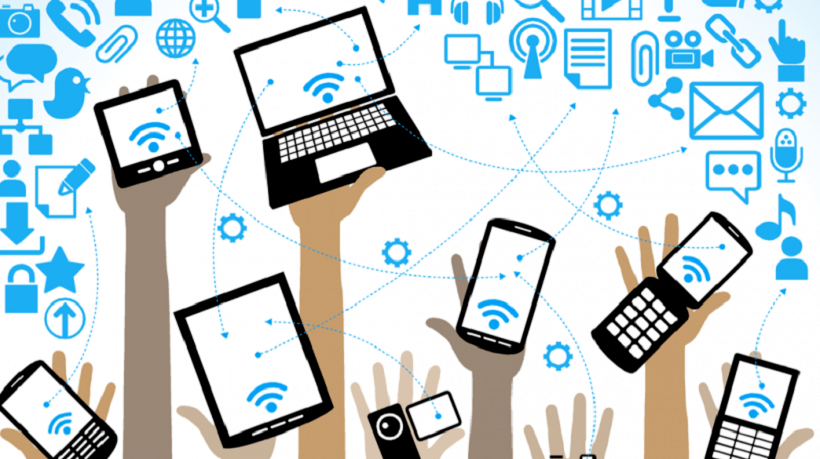Introduction
Once predicted now Mobile technology is quickly becoming the backbone of education and teaching worldwide during this long phase pandemic of covid 19.
Background
One of the foremost notable sources of development in both the developed and developing world is the number of educated citizens present within the workforce and participating involvement in improving and growing the economy..
Education is “the key to sustainable, self-reliant development. education that reaches bent all members of society through new modalities and new technologies so as to supply genuine lifelong learning opportunities for all”
UNESCO, 1997
As well, the European Council emphasized in their 2006 conference, which drafted the ECU Union’s (EU) plans for a rise in public education, that
Investments in education and training produce high returns which substantially outweigh the prices .
European Council 2006
Incidentally, members of the EU specifically Denmark and Sweden show the very best level of public investment in education globally with 7% of the GDP allocated for educational programs (European Commission, 2008).
At an equivalent time, both reflect two of the very best GDP per capita as shown by data from 2007 to 2011, trumping both United States and therefore the United Kingdom (The World Bank, 2012).
Education as key to development
Mobile Technology
So if education is such a crucial element within the scope of a country’s economic welfare, why then so many countries still have very high illiteracy rates and really few programs that will sufficiently address this?
The answer, because it always has been, is due to the lack of scholars to access educational sources with ease and therefore the limitations educators need to provide students with updated and quality information. We call it the root of mobile technology.
Roots of Mobile Technology ( Development)

Professors and educators, consultants, and think tanks have spent numerous hours within the last millennium thinking of a thought that might adequately be ready to address these concerns – running multiple surveys, focus group discussions, data research, and pilot programs – so as to return up with an answer that ironically, has been staring most folks within the face for the last a decade approximately -literally and figuratively.
The rise of mobile technology and social media has been an explosive development within the area of communication and technology. With the arrival of such gadgets as Symbian phones, Smartphones, Androids, and fancy alternatives just like the iPhones, a revolutionary change took place within the way people access information and connect with the world.
It comes as no surprise then that education advocates like UNESCO and therefore the World Bank have encouraged a shift towards online education and mobile platforms of learning, creating divisions that primarily promote and develop open education systems.
Mobile Technology
What matters now ?
Every bright idea always bears with it a devil’s advocate And much of the criticism around this initiative has been on the questionable quality of education provided online through mobile technology. The obvious reason for this objection is the absence of any regulatory framework or mechanism to tighten the control and supervise the online classes being done instead of physical classes. The learning of children is in question but during this dark phase, no one is bothered to ask for it whether it carries quality or not. It’s the time that covers everything. 2019 pandemic have paved the way for the establishment, of mobile technology as an alternative way for learning, teaching, and running classroom.
Open Sources
Mobile Technology
These critics present good points as open sources, like Wikipedia and Edupedia (an initiative of CCLP Worldwide ) and similar educational content providers, allow users from anywhere the planet to edit the content on the web and thus run the risk of getting irresponsible authors or biased editors include content that tells a one-sided – if not downright incorrect – story.
Many open education systems like those being promoted by the premier and notable institutions have administrators who monitor the content being submitted and edited.
As a fact admins maintain a good amount of control and choose what goes into the website and what’s filtered out.
Educational Contents
The availability of educational material online however doesn’t assure the general public that its users would be ready to fully maximize the advantages because the motivation to find out still resides with the scholar.
During this case, supervision outside of the classroom does become a cause for concern as students, especially young children, would sometimes require the guidance and support of mentor figures that would encourage them to figure on their online lessons and learn the maximum amount as they will from the resources being offered.
Role of Schools and Faculties
School teachers and university professors are the prime candidates for this role and have proven to be quite effective –that’s if the scholars are literally ready to get to high school. The pandemic situation says so that faculty plays an important role in covering the gap and streamline the teaching.
As previously mentioned, much of the challenge has been around students’ inability to travel from home to high school thanks to the shortage of roads and infrastructure that would allow easier access into the towns from rural areas. And now the pandemic situation has completely immobilized the whole students and teachers fraternity to meet at physical place i.e school or college.
What was previously attached to underdeveloped nations now become a reality worldwide. Most developing countries face these challenges, especially children who sleep in the mountainous regions, who would wish to scale boulders and mountainsides to visit high school, often wasting half the morning just traveling.
During this instance, motivation would be low despite anything the varsity teachers or professors would say, especially if the scholar has not yet fully realized that the advantages of education are commensurate or maybe far exceed the time and energy dedicated to getting it.
The concern around access and availability becomes even more pressing then. And what better thanks to addressing this than to tap into a well-liked, accessible, and surprisingly indispensable commodity which most households have – mobile phones.
Connectivity is now mobility
4.72 billion people around the world use the internet in April 2021 – that’s more than 60 percent of the world’s total population. It follows that 60% of the population uses the internet either through mobile technology or computer technology. The share of mobile technology users especially smartphone users are more compared to another technology form.
These statistics mean a lot to understand the penetration of mobile technology in every household. Before the pandemic, the penetration was growing but after the pandemic, it is omnipresent. More than one-half of the entire world population currently own mobile phones which enable them to access open education sites and supply students with an alternate choice to education. With such a good reach, the likelihood of accelerating the speed of literacy in developing or developing countries round the world becomes a solid probability.
Conclusion in the time pandemic
If we consider the presence of online educational tools as an answer to students’ ability to access material while residing in isolated areas of the world or faring through the pandemic situations, the priority of society is to motivate students to adopt this technology for access and education.
Without the feel and look of the physical existence ( classroom) of teachers and educators, it is often assumed that the student’s motivation to finish the teachings could drop without proper encouragement.
The idea of connecting through technology, though valid, is restricted. And as online models are evolving and still preparing to allow students to be ready to interact with the professors through online chat, video conferences, electronic classroom webinars, and other such examples. The picture has just begun the community has to go a long way to achieve their aspiration with the help of mobile technology.
Readers are suggested to check similar article here
Video to watch to know more about digital education
More articles
The 4D Knit Dress: Where Fashion Technology Meets Sustainability
How to download Steam – Ends February with 42 Free Games: A Gamer’s Paradise
The Perceptron algorithm: Pioneering the Path to AI
India’s Rise in the Semiconductor Ecosystem
Emotions Recognition: How Wearable Tech Can Read Your Feelings
Amazing ! Reinforcement Learning from Human Feedback: Bridging AI and Human Intelligence
difference between educational technology communication technology and information
Pros and Cons of e-Learning: Exploring the Digital Frontier of Education
Discover more from News 24 Media
Subscribe to get the latest posts sent to your email.


